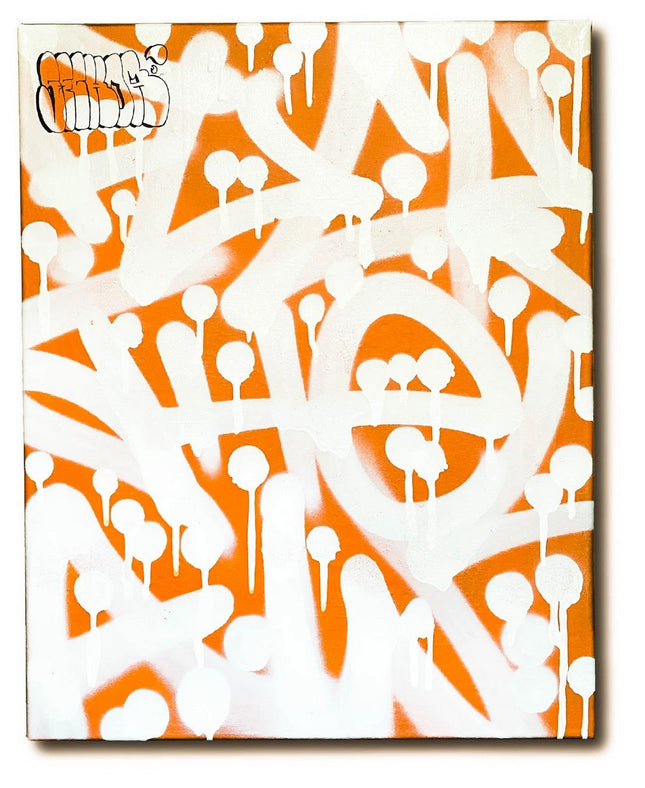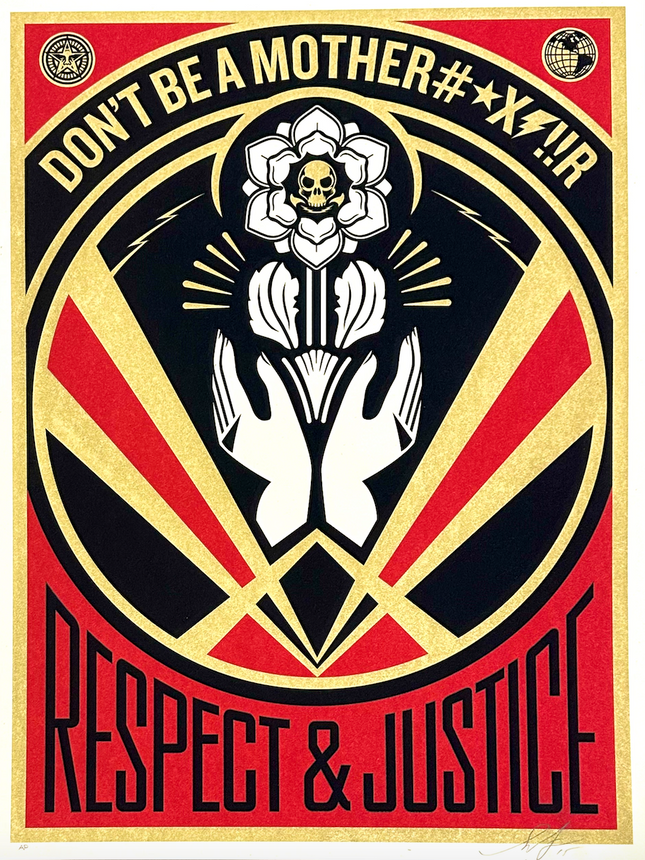Law

Sechor Fuck The Law Mixed Media Painting by Sechor
Fuck The Law Original One of a Kind Mixed-Media Spray Paint Painting Artwork on Canvas by Popular Street Graffiti Artist Sechor. 2021 Signed Mix Media on 16x20 on Unstretched Canvas
$489.00

Shepard Fairey- OBEY Don’t Be a MFR AP Silkscreen Print by Shepard Fairey- OBEY
Don't Be a MFR AP Artist Proof Silkscreen Print by Shepard Fairey- OBEY Hand-Pulled 5-Color on Cream Speckletone Fine Art Paper Limited Edition Artwork Obey Pop Culture Artist. AP Artist Proof 2015 Signed by Shepard Fairey- OBEY & Numbered Limited Edition of 550 Artwork Size 18x24 Silkscreen Print. Don't Be A Mother Fucker. Don't Be A MOTHER#*X!! R Respect & Justice. The Provocative Appeal of 'Don't Be a MFR' by Shepard Fairey Shepard Fairey's 'Don't Be a MFR AP' is a bold exemplar in street pop art and graffiti artwork. Fairey, an American artist and provocateur born on February 15, 1970, continues to push the boundaries of art and activism. This particular work, part of an artist-proof (AP) series released in 2015, is characteristic of Fairey's approach to engaging with cultural and societal themes through his art. The hand-pulled 5-color silkscreen print on cream speckle tone paper echoes Fairey's distinctive aesthetic while carrying a strong message of respect and justice. Symbolism and Messaging in 'Don't Be a MFR' The artwork's title, 'Don't Be a MFR,' captures the eye with its intentional censoring, a tactic that allows for a broad interpretation and stirs curiosity. Within the limited edition series of 550, each piece sized at 18x24 inches, Fairey's work resonates with the power of command and the gravity of a public service announcement. The print is decorated with the words' Respect & Justice,' a direct call to action central to much of Fairey's oeuvre. Fairey employs symbols like the skull enveloped in a flower, a duality that speaks to the juxtaposition of life and death, growth and decay, reinforcing the message of the consequences of one's actions. The overall design is reminiscent of emblems and seals, often associated with authority and institutions, which Fairey repurposes to deliver his socio-political commentary. The choice of bold, angular graphics, in conjunction with the roundness of the emblematic seal, displays the tension between disruption and order, a recurrent theme in street pop art. Impact on Street Pop Art and Cultural Discourse The 'Don't Be a MFR' series exemplifies the potential of street pop art to serve as a medium for societal reflection and critique. The use of a public vernacular and the direct address to the viewer exemplify Fairey's commitment to making art accessible and demanding attention. Each print in the series, bearing Fairey's signature, is a testament to the belief that art should not shy away from controversy but rather confront and challenge the viewer. This piece, in particular, adds to the rich tapestry of graffiti artwork that has historically been used to communicate messages to a broad audience, often bypassing traditional media and institutional spaces. Fairey's work is a modern-day manifestation of this tradition, utilizing the urban canvas to prompt a public introspection on issues of respect and justice. The artwork serves not just as a visual spectacle but as a catalyst for conversation and, ideally, for action. Shepard Fairey and the Continuum of Artistic Activism Shepard Fairey's 'Don't Be a MFR' continues the artist's enduring legacy in art and activism. Residing in Los Angeles, California, Fairey remains a significant influence, harnessing the vibrancy of street pop art to voice his dissent and mobilize public sentiment. His work is anchored in the belief that art is a powerful change agent capable of inspiring individuals to think critically about the world around them. This particular silkscreen print carries the OBEY logo, an integral aspect of Fairey's brand, which doubles as a command and a critique of authoritarian tendencies. The artwork's appeal lies in its ability to be aggressive and reflective at once, pushing observers to consider their role in maintaining or disrupting social justice. Fairey's dedication to the intersection of art and societal issues solidifies his position as an artist and a significant cultural instigator in contemporary times.
$1,500.00


